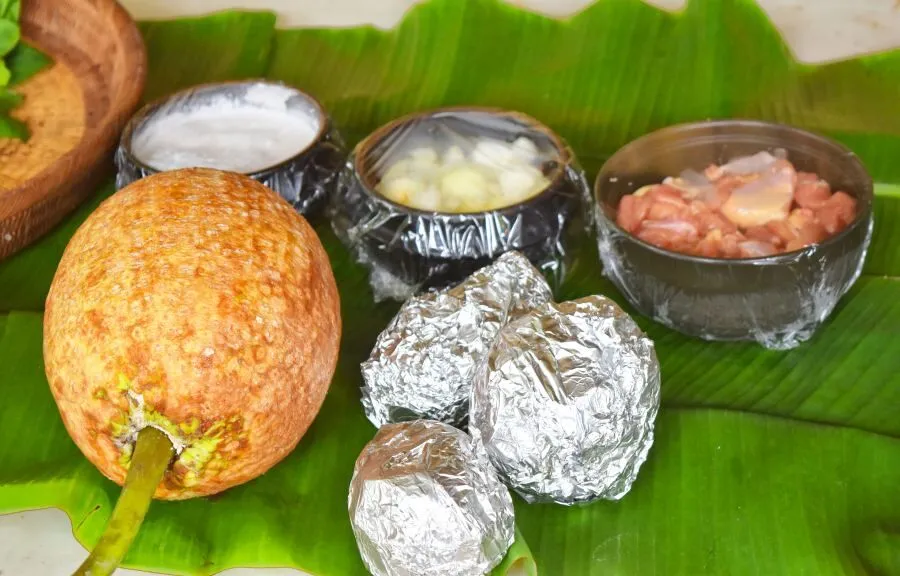Take Me to The Recipes
The Kingdom of Tonga, an archipelago in the South Pacific, boasts a rich culture and an equally rich cuisine. With its tropical climate, Tonga’s weather is characterized by a warm, humid atmosphere perfect for the growth of a variety of fruits and vegetables all of which adds to the abundance of flavors that make up Tongan Cuisine.
Tonga’s population is approximately 100,000, a community that holds its traditions and national dishes close to its heart. These dishes form the essence of Tongan cuisine, a topic as inviting as the warm Pacific waters surrounding the islands.
Located to the southeast of Fiji and to the south of Samoa, this picturesque country is made up of more than 170 islands, many of which offer stunning scenery, from white sandy beaches to volcanic landscapes. The main industrial activities include agriculture, which is an integral part of the local economy, and tourism, which capitalizes on the natural beauty and cultural heritage of the islands.
Read on to uncover the tantalizing world of Tongan cuisine, from historical influences to traditional dishes, and embark on a flavorful journey through this South Pacific gem.
Tongan Cuisine – Key takeaways
- Tongan cuisine reflects the country’s tropical climate and island geography.
- Chefs often cook traditional foods in an ‘umu, a Polynesian earth oven.
- Root crops like taro and cassava, and fruits such as coconut, are staple ingredients.
- Seafood plays a significant role in the Tongan diet, fresh from the Pacific Ocean.
- Feasting and sharing food is a central part of Tongan culture and social life.
- Tongan cuisine includes distinctive dishes like Lu Pulu and Ota Ika that are worth trying at home.
Take Me to The Recipes
You may also Enjoy the Following Articles
- North and South American Cuisine – A Culinary Expedition
- Europe Cuisine: Savor the Continent’s Best Culinary Secrets!
- African Cuisine: Discover the Bold Flavors & Global Charm!
- Asian Cuisine Unlock its Secrets – Taste, Health & Global Influence!
- Australian Cuisine – A Delightful Taste Adventure
Where is Tonga?

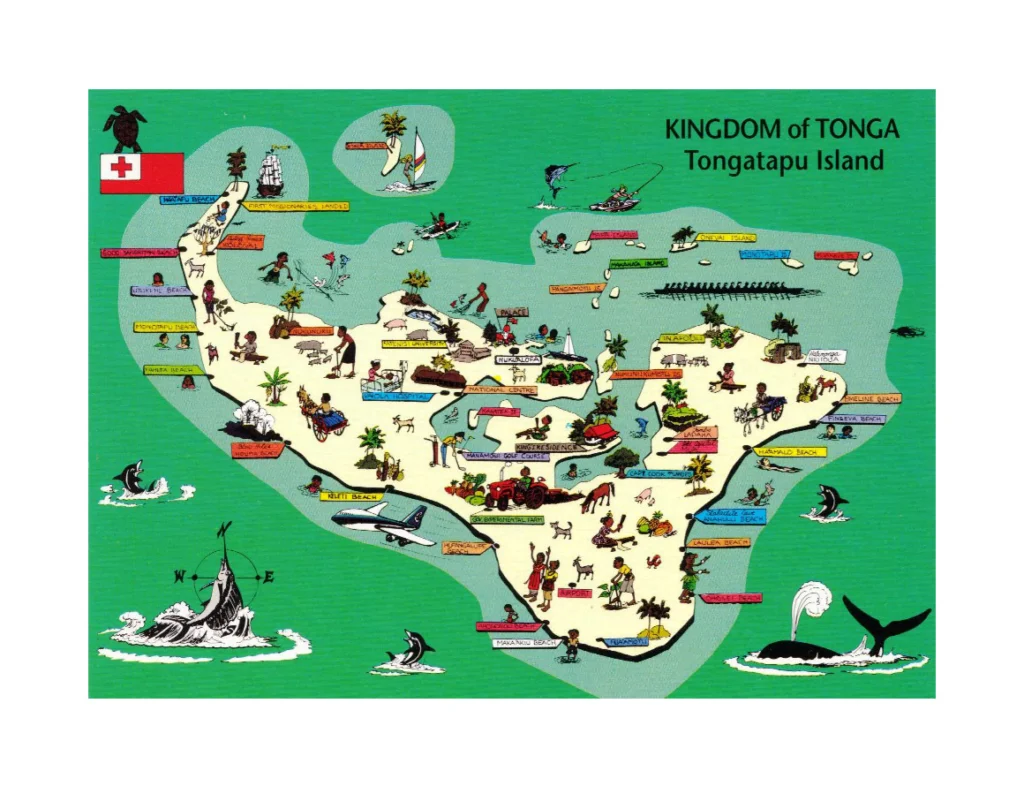
Index of Contents
- Take Me to The Recipes
- Tongan History and Its Impact on Tonga Food
- How Tonga’s Climate and Geography Influence Tonga Food
- Understanding the Essence of Tongan Food Recipes
- Traditional Tongan Food
- Health Implications of Tonga’s Cuisine
- Tonga’s National Dish
- Recipes You can try at Home.
- Frequently Asked Questions
Savor iconic Tongan Food Recipes – Click on each tantalizing picture to open up the Recipe
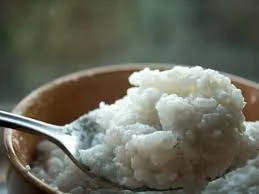





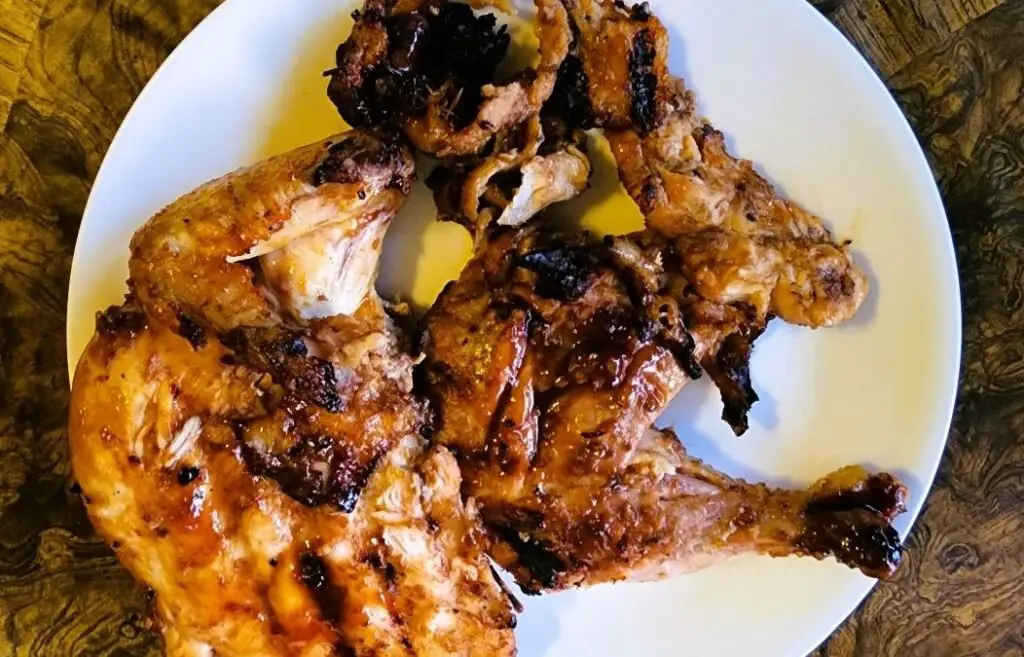
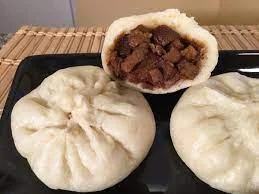
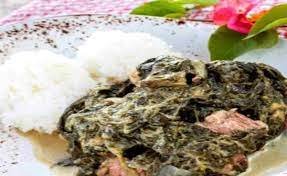


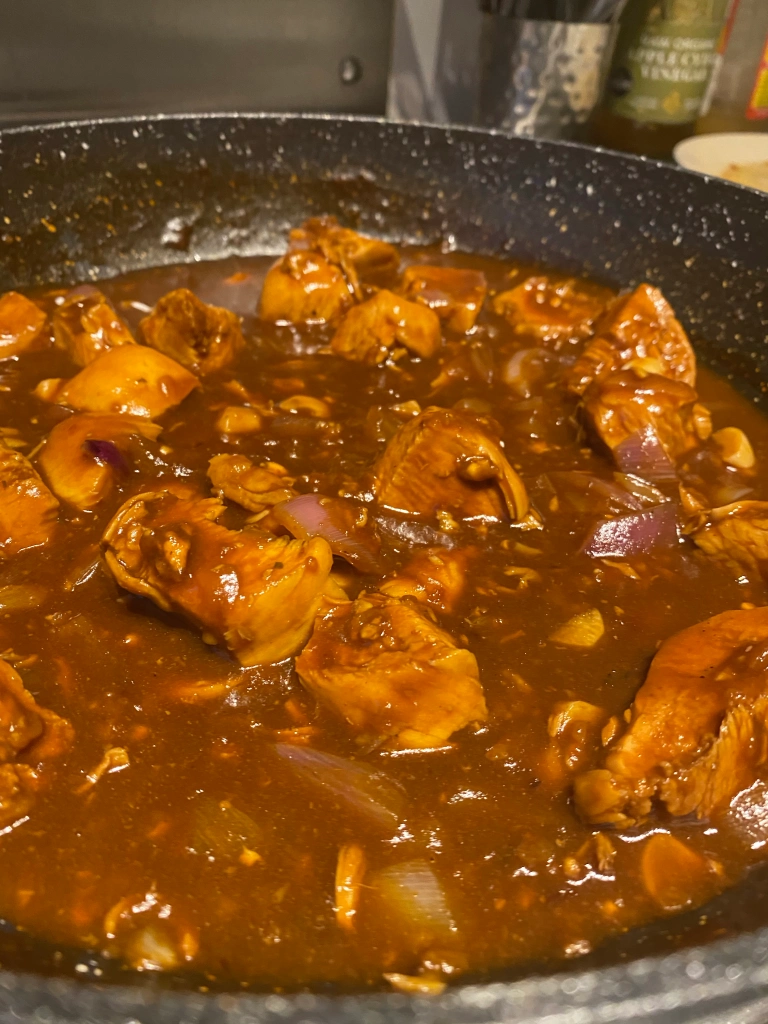
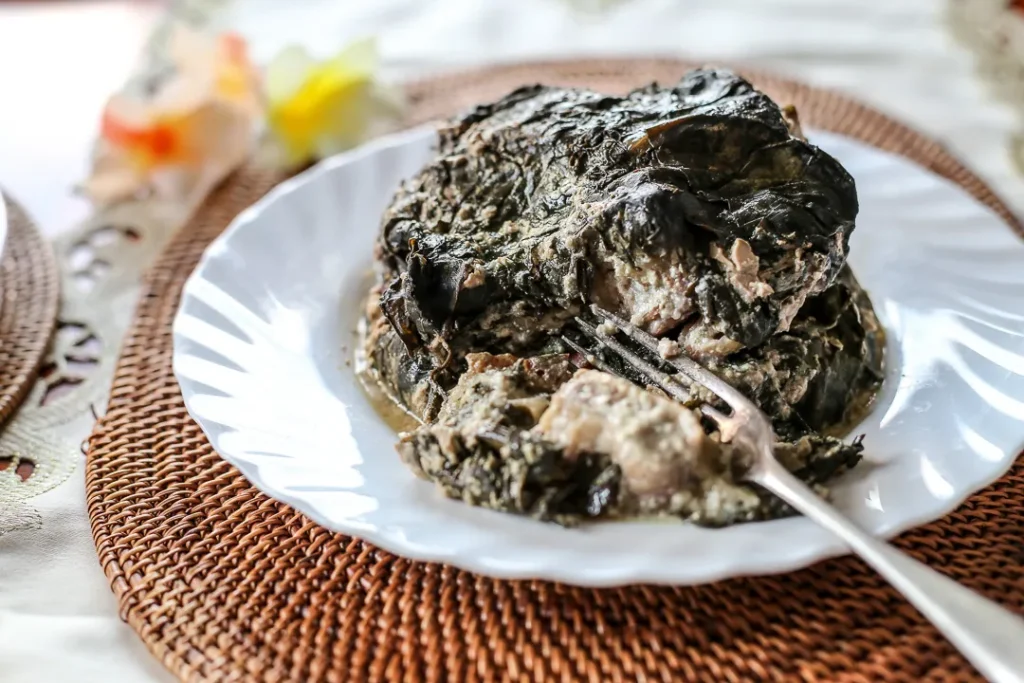
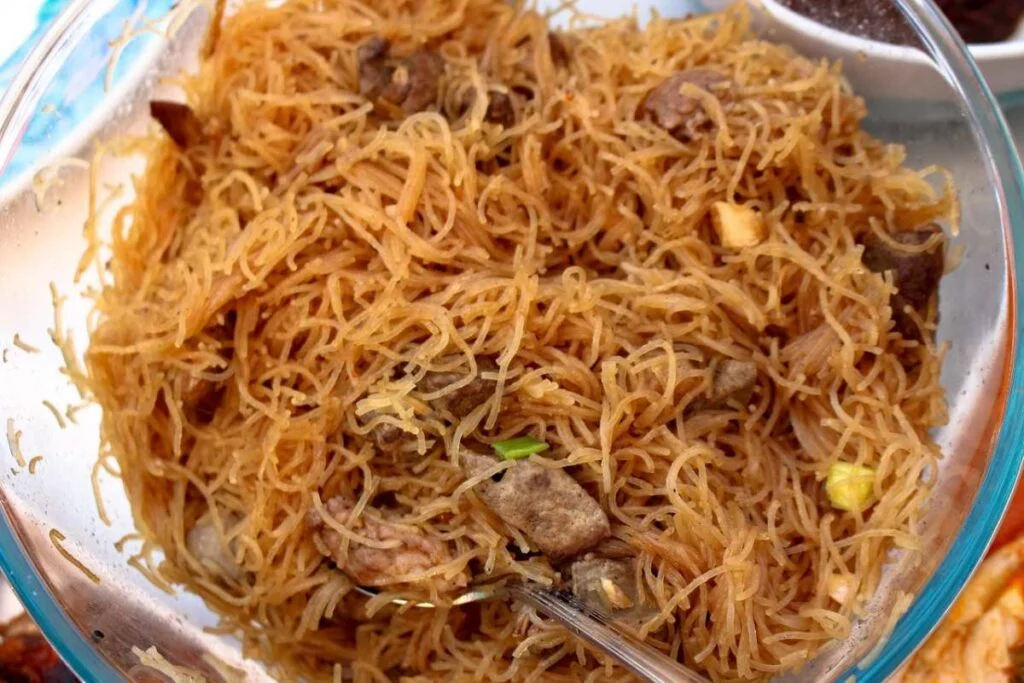

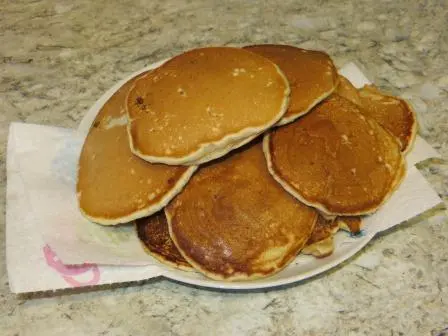
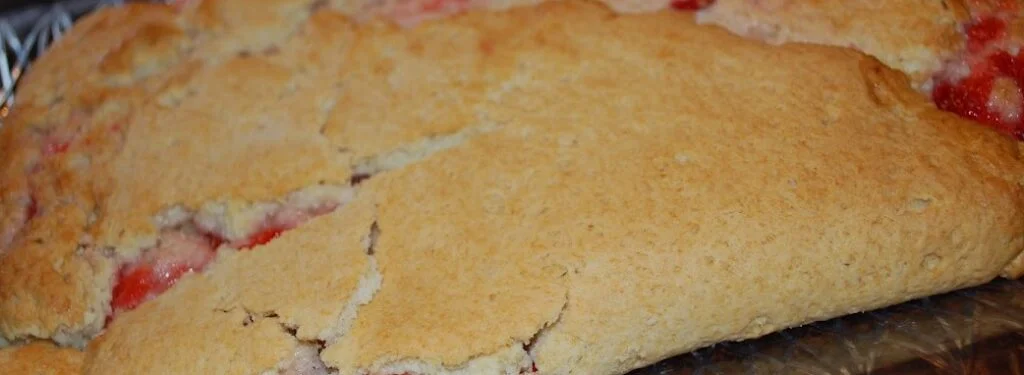
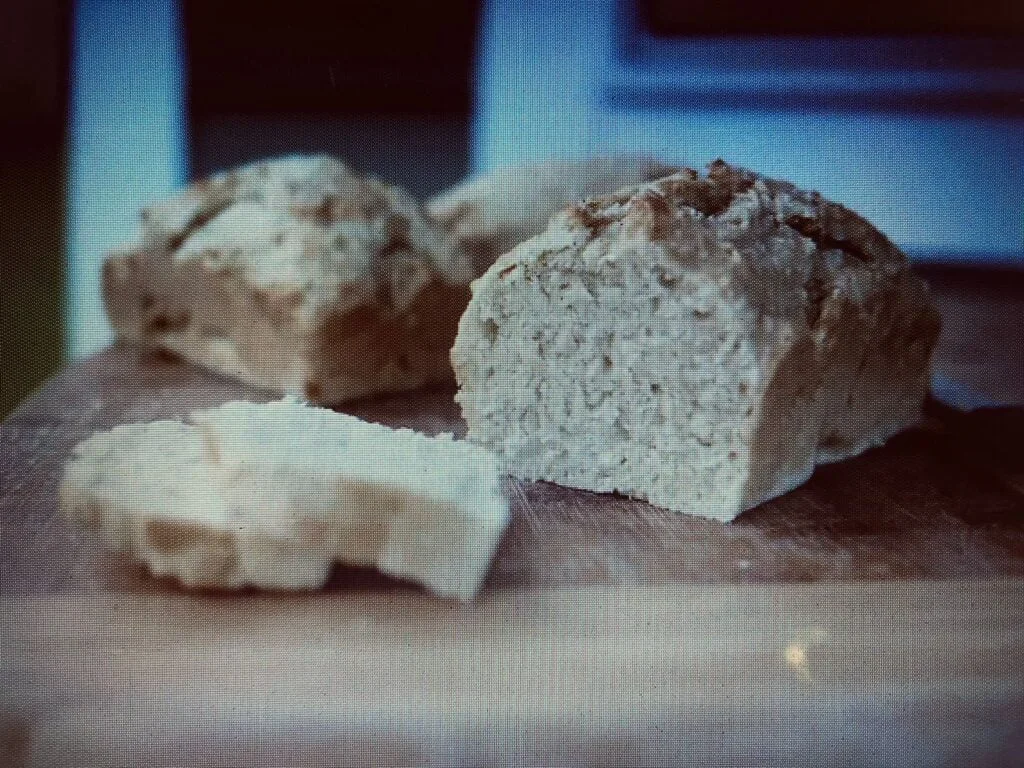
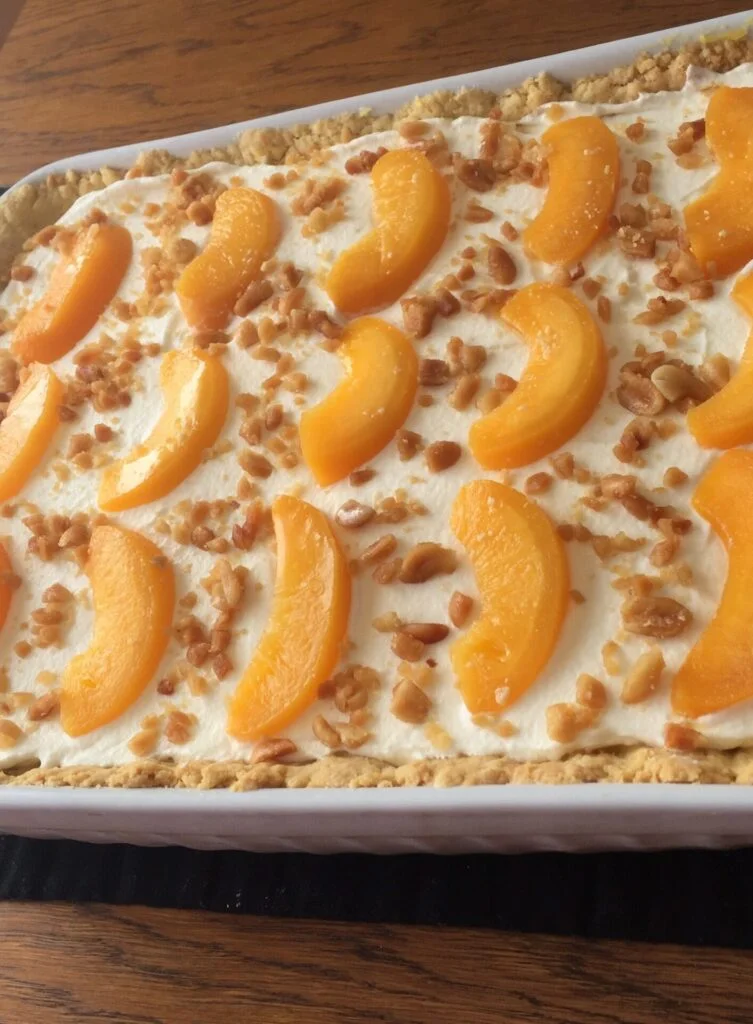
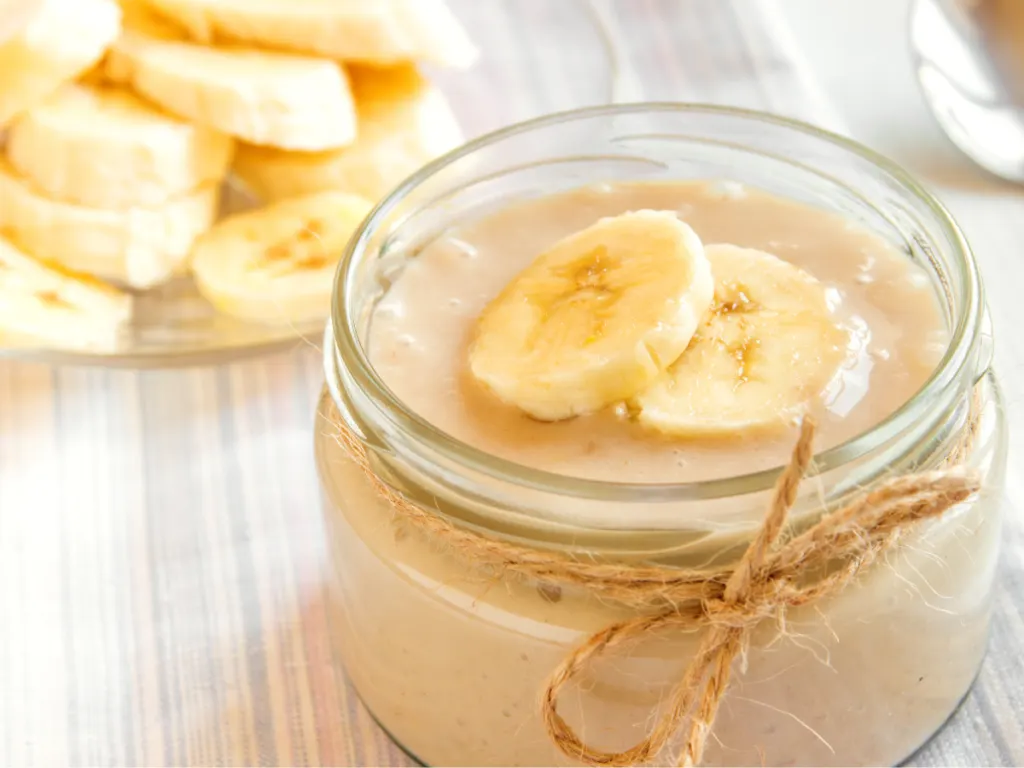
Tongan History and Its Impact on Tonga Food
The story of Tongan history, spanning centuries, has profoundly shaped the nation’s distinctive cuisine. From the early days of Polynesian settlement to encounters with European explorers, each chapter has left an indelible mark on Tonga’s culinary landscape.

The Polynesian ancestors of the Tongan people, skilled navigators and seafarers, brought with them not only their voyaging knowledge but also a deep connection to the land and sea. This connection is evident in Tongan food, where traditional ingredients like taro, yams, and coconut find their roots in ancient agricultural practices.
European contact in the 17th century introduced new elements to Tongan cuisine. The exchange of goods, including crops like cassava and the introduction of livestock, expanded the range of ingredients available. However, the core of Tongan cooking remained grounded in local produce and traditional methods.
The Arrival of Methodism
The arrival of Methodism in the 19th century had a significant impact on Tonga’s social structure, including food practices. The concept of the ‘umu’ (earth oven) became intertwined with communal gatherings, symbolizing not only a method of cooking but also a shared experience that fostered unity.
In the modern era, Tonga’s history has shaped a culinary identity that blends tradition with adaptation.
Traditional dishes like ‘ota ika’ (raw fish marinated in coconut cream) and ‘lū sipi’ (coconut lamb) showcase the legacy of Polynesian navigation and European influences.
Exploring Tongan history reveals a narrative of resilience and adaptation, elements mirrored in the nation’s food. The historical chapters continue to influence Tongan cuisine, creating a flavorful story that invites both locals and visitors to savor the rich tapestry of the Kingdom of Tonga’s past on their plates.
How Tonga’s Climate and Geography Influence Tonga Food

Tonga’s climate and geography play a pivotal role in shaping the unique flavors and ingredients that define its culinary landscape. Located in the South Pacific, Tonga is an archipelago of over 170 islands, each contributing distinct elements to the nation’s food culture.
The tropical climate of Tonga, characterized by warm temperatures and high humidity, fosters the growth of a diverse range of fruits and vegetables. Coconut palms thrive in this environment, providing essential ingredients like coconut cream, milk, and oil that feature prominently in Tongan dishes. The abundance of tropical fruits such as bananas, papayas, and pineapples adds sweetness and freshness to many recipes.
The fertile soil and lush landscapes of Tonga support the cultivation of staple crops like taro, yams, and cassava. These root vegetables are integral to Tongan cuisine, forming the foundation of many traditional dishes.
Tonga has Access to the Pacific Ocean
The surrounding Pacific Ocean influences Tonga’s reliance on seafood. Fish, octopus, and other marine delicacies are staples in Tongan meals, reflecting the island nation’s dependence on the ocean for sustenance. Traditional fishing methods, passed down through generations, contribute to the sustainable harvesting of marine resources.
The geography of Tonga, with its coral reefs and abundant marine life, also impacts the availability of ingredients. Coastal communities have developed expertise in preparing and cooking seafood, creating dishes like ‘ota ika’ (raw fish salad) and ‘lolo moa’ (coconut chicken) that showcase the close relationship between the land and the sea.
Tonga’s climate and geography, characterized by the warm embrace of the Pacific, have not only influenced the availability of ingredients but also fostered a culinary heritage that celebrates the bountiful offerings of the islands. The connection between the natural environment and Tongan food remains a testament to the symbiotic relationship between the people and their lush, tropical surroundings.
Understanding the Essence of Tongan Food Recipes
Tongan recipes embody a harmonious fusion of cultural significance and delicious flavors. Rooted in tradition, these recipes showcase the essence of Tonga’s culinary heritage, celebrating the islanders’ connection to the land and sea.
Traditional Tongan Food
Traditional Tongan food is a rich tapestry woven from the cultural heritage of the islands, reflecting the customs, values, and history of the Tongan people. Rooted in simplicity and authenticity, Tongan cuisine showcases a harmonious blend of locally sourced ingredients, traditional cooking methods, and an emphasis on communal dining.
Key Ingredients:
- Taro and Root Vegetables: Taro, yams, and cassava form the heart of many Tongan dishes, providing sustenance and grounding the culinary tradition in the island’s staple crops.
- Coconut: A versatile ingredient, coconut is used in various forms—coconut cream, milk, and oil—to add richness and flavor to both savory and sweet creations.
- Seafood: Given Tonga’s island geography, seafood is abundant and widely enjoyed. Fish, octopus, and other marine delights are prepared using traditional methods, preserving the essence of Tonga’s coastal culture.
Traditional Dishes:
- Lu Pulu: A classic Tongan dish featuring taro leaves cooked with corned beef, coconut cream, and onions, encapsulating the essence of Tongan comfort food.
- ‘Ota Ika: A raw fish salad infused with coconut milk, lime, and various seasonings. This dish highlights the freshness of Tonga’s seafood offerings.
- Faikakai Topai: A ceremonial dish, often prepared for special occasions, where taro and other root vegetables are cooked in an underground oven called an ‘umu.’
Cooking Techniques:
- Umu: The traditional earth oven, or ‘umu,’ is central to Tongan cooking. Ingredients are wrapped in banana leaves and cooked over hot stones, infusing them with a distinctive smoky flavor.
- Lapulu: Fermentation is employed in dishes like ‘lapulu,’ where grated cassava is fermented and then cooked with coconut cream.
Communal Dining:
Tongan meals are a communal affair, with the family gathering to share platters of food. This practice fosters a sense of togetherness and community, reinforcing the importance of food as a cultural cornerstone in Tonga. Traditional Tongan food not only satisfies the palate but also serves as a vessel for preserving and passing on the cultural legacy of the islands.
Health Implications of Tonga’s Cuisine
Tonga’s cuisine is a mix of traditional and modern influences, with a strong emphasis on fresh seafood and tropical fruits. However, Tonga also faces some health challenges related to its food choices and availability. Here are some of the health implications of Tonga’s cuisine:
Tonga has an Obesity Problem
Tonga has one of the highest rates of obesity and non-communicable diseases (NCDs) in the world, such as diabetes, high blood pressure, and heart disease. This is partly due to the consumption of imported foods that are high in fat, salt, and sugar, such as corned beef, mutton flaps, and soft drinks.
These foods are often cheaper and more accessible than local fresh foods, especially in urban areas.
Tonga’s Population suffers from Micronutrient Deficiencies
Tonga also suffers from micronutrient deficiencies, such as iron, vitamin A, and iodine, which can affect the growth and development of children and the health of women. This is partly due to the low intake of fruits and vegetables, which are rich in vitamins and minerals, and the reliance on staple foods, such as taro, cassava, and breadfruit, which are low in micronutrients.
The country has Issues with Food Security
Tonga is vulnerable to food insecurity, which is the lack of access to sufficient, safe, and nutritious food. This is partly due to the dependence on food imports, which can be disrupted by natural disasters, climate change, or trade barriers. It is also partly due to the decline of local food production, which is affected by land degradation, urbanization, and changing lifestyles.
To address these health issues, Tonga has taken some measures, such as introducing an ‘NCD tax’ on unhealthy foods and beverages, promoting local food production and consumption, and improving food safety and quality standards.
However, more efforts are needed to ensure that Tongans have access to affordable, diverse, and nutritious food that supports their health and well-being.
References
- World Bank Blogs
- World Health Organization
- ManuSecond International Conference on Nutrition, Rome 20th November 2014
Tonga’s National Dish
Tonga’s national dish, Lu Pulu, stands as a symbol of cultural identity and communal traditions. This beloved dish encapsulates the essence of Tongan cuisine, featuring taro leaves cocooned in layers of corned beef, onions, and coconut cream.
Prepared with meticulous care, Lu Pulu reflects the island’s reliance on locally sourced ingredients and traditional cooking methods, such as the earth oven (‘umu’). Its rich flavors and hearty composition make it a staple at festive gatherings and special occasions, embodying the warmth and hospitality of Tongan culture.
Lu Pulu, a culinary masterpiece, is more than a dish; it’s a representation of Tonga’s history, unity, and the enduring connection between food and community.
Tongan Food Recipes – Great Examples to Try at Home
Delve into the world of Tongan cooking with these handpicked recipes. From the iconic ‘ota ika’ to the comforting ‘lū sipi,’ bring the flavors of Tonga to your kitchen and experience the warmth of Pacific hospitality.
Embark on a culinary adventure with Tongan food, where history, tradition, and flavors converge in a celebration of the Kingdom of Tonga’s rich cultural heritage.
Tongan Cuisine – Ota Ika
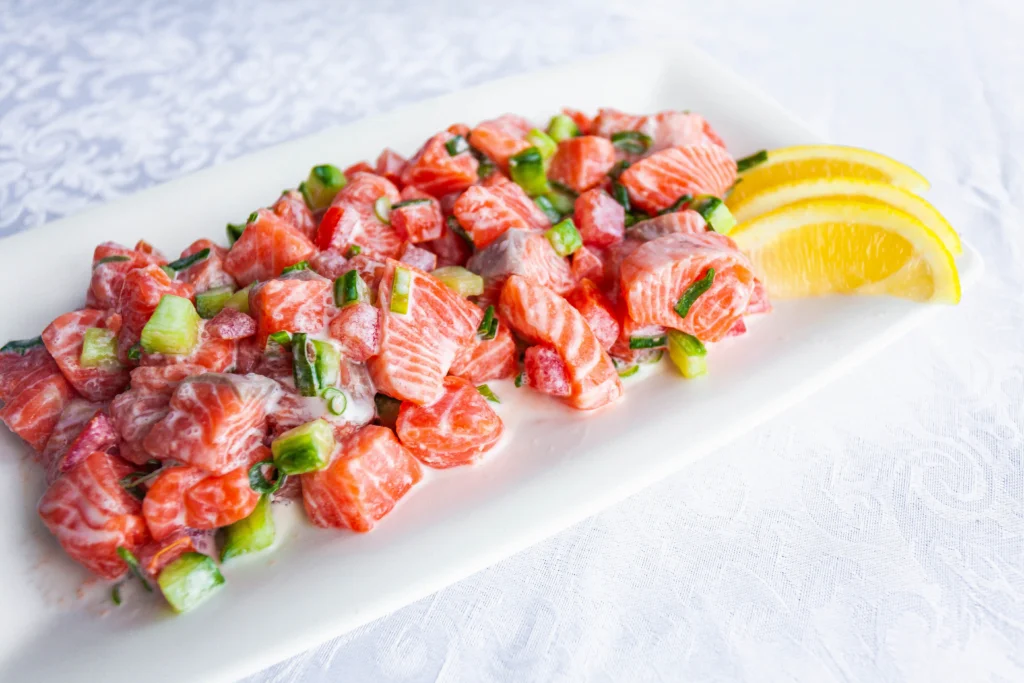
History and Background
Ota Ika is Tonga’s version of ceviche, a dish that showcases the freshness of the ocean. Some say tha the best way to enjoy them is on the beach with feet in the sand. They are equally delightful anywhere when made with fresh ingredients.
Chefs typically serve this dish during gatherings, and it is a favored starter due to its refreshing qualities.
Ingredients for Ota Ika
- Fresh tuna or other firm white fish, diced
- Lemon or lime juice
- Coconut milk
- Finely chopped onions
- Diced tomatoes
- Sliced spring onions
- Salt and pepper
- Chopped chili (optional)
How to prepare Ota Ika
- Marinate the diced fish in lemon or lime juice.
- Ensure that the juice covers them.
- Refrigerate for at least an hour until the fish turns opaque.
- This indicates it is ready.
- Drain the fish and mix with coconut milk, onions, tomatoes, spring onions, and season with salt, pepper, and chili if using.
- Let it sit to allow the flavors to meld together.
To serve, present the Ota Ika in a coconut shell or a simple bowl, garnished with additional spring onions or edible flowers for an authentic tropical feel.
Drinks that pair well with Ota Ika are light and refreshing, such as coconut water, a crisp white wine, or a light beer.
Tongan Cuisine – Main Courses
When it comes to the heartwarming and communal spirit of Tonga, nothing represents it better than their main courses. Known for their rich flavors, Tongan cuisine is a fascinating blend of traditional Pacific ingredients and methods, with a touch of influence from European and other Pacific neighbors.
Their main dishes are often center around fresh seafood, root vegetables like taro and yams, and coconut— a testament to the island’s bountiful resources. With a focus on the communal sharing of meals, chefs prepare main courses in Tonga in large quantities and are perfect for family gatherings or festive celebrations.
Tongan cuisine – Lu Pulu

Let’s talk about Lu Pulu, which is as traditional as it gets! This hearty dish, often served at gatherings, encapsulates the essence of Tongan flavors.
Tongan cuisine – Origins and Occasions
Lu Pulu’s history is steeped in Tongan tradition. The name literally translates to “tar leaves” (lu) with “pulu,” referring to the corned beef often used in this dish.
Historically, meat was a luxury in the Pacific islands, and corned beef became popular as a preserved form that could be imported. Lu Pulu is now a beloved staple for special occasions, bringing a taste of luxury and celebration to the table.
Tongan cuisine – Ingredients for Lu Pulu
- Fresh taro leaves
- 1 can of corned beef or fresh beef slices
- 1 can of coconut milk
- 1 onion, finely sliced
- Sea salt to taste
- Aluminum foil for wrapping
How to prepare Lu Pulu
- Preparing Lu Pulu is like unwrapping a present.
- You start by laying down taro leaves, topping them with slices of corned beef or fresh beef, and scattering the sliced onions on top.
- Season it with a pinch of salt and pour over the creamy coconut milk, then wrap the leaves around the mixture, enveloping it in foil to create a little package.
- These parcels are then traditionally baked in an underground oven known as an ‘umu, but your trusty kitchen oven will do the job just fine.
To serve Lu Pulu, you unfold the leaves and let the aromatic steam escape, offering your guests a beautifully tender and flavorful meat dish that’s both comforting and exotic.
Serving and Presentation
Chefs typically serve Lu Pulu hot, right out of the oven. The parcel itself creates a rustic and intriguing presentation.
When the diners unwrap it, the chefs often serve the steamy, aromatic bundle directly onto a plate.
Root vegetables or a fresh salad accompany it.
Drink Pairings
A cold, refreshing lager or a tropical fruit punch would complement the rich flavors of Lu Pulu beautifully, cutting through the richness of the meat and coconut.
Tongan Cuisine – Kapisi Pulu

History and background
Kapisi Pulu, which translates to “cabbage and coconut”, reflect the resourcefulness and tropical abundance of Tonga. This dish is a traditional Tongan recipe that features chicken wrapped in cabbage leaves and slow cooked in coconut milk. The use of cabbage and coconut milk is very common in Pacific Island cooking, where both ingredients are staples.
Kapisi Pulu likely has its origins in the idea of using available local ingredients to create a hearty and filling meal. Like many Tongan dishes, it is typically cooked in an ‘umu’, which is a traditional earth oven. However, it can also be easily adapted to modern kitchens using an oven or slow cooker.
Family gatherings are the perfect setting to serve this dish. It is especially popular during feasts and celebrations.
Here is a detailed list of ingredients and a comprehensive recipe for Kapisi Pulu:
Tongan Cuisine – Kapisi Pulu Ingredients
- 1 whole chicken, cut into pieces, or 2-3 pounds of chicken thighs/drumsticks
- 1 medium-sized cabbage, with large leaves carefully separated to remain intact
- 2 cans of coconut milk (approximately 800ml)
- 1 large onion, thinly sliced
- 2 tomatoes, sliced (optional)
- 2-3 cloves of garlic, minced
- Salt and pepper to taste
- 1 tablespoon of vegetable oil (if browning the chicken)
- Corned beef (optional, as a variation)
- Additional vegetables, such as carrots or bell peppers, sliced (optional)
Tongan Cuisine – Kapisi Pulu Recipe
Preheat the Oven
- Preheat your oven to 350°F (175°C) if you’re cooking Kapisi Pulu the modern way.
Prepare the Chicken
- Season the chicken pieces with salt and pepper.
- If you prefer browning the chicken, heat oil in a pan over medium heat and brown the chicken pieces for about 2-3 minutes on each side. This step is optional, for a lighter version of the dish you can skip it.
Prepare the Cabbage Leaves
- Blanch the whole cabbage leaves in boiling water for a few minutes until they are pliable. Then, drain and set aside to cool.
Wrap the Chicken
- Place a piece of chicken on a cabbage leaf, add a slice of tomato if using, and wrap the leaf around it, creating a parcel. Repeat with the remaining chicken pieces.
Layering the Dish
- In a deep baking dish or casserole, lay down a bed of the remaining cabbage leaves, sliced onions, and additional vegetables if desired.
- Place the chicken parcels on top of the cabbage bed.
- Pour the coconut milk over the chicken parcels.
- Ensure the milk covers them.
- The coconut milk will infuse the chicken and cabbage with a rich, creamy flavor as it cooks.
Baking
- Cover the baking dish with aluminum foil or a lid.
- Bake in the preheated oven for about 1 to 1.5 hours, or until the chicken is fully cooked and tender.
Serving
- Carefully remove the Kapisi Pulu from the oven.
- Serve hot, with the creamy coconut sauce spooned over the parcels.
- You can enjoy it on its own or with a side of steamed rice or root vegetables such as taro.
Kapisi Pulu is a comforting, rich dish that embodies the warmth and hospitality of Tongan cuisine.
Tongan cuisine – Feke
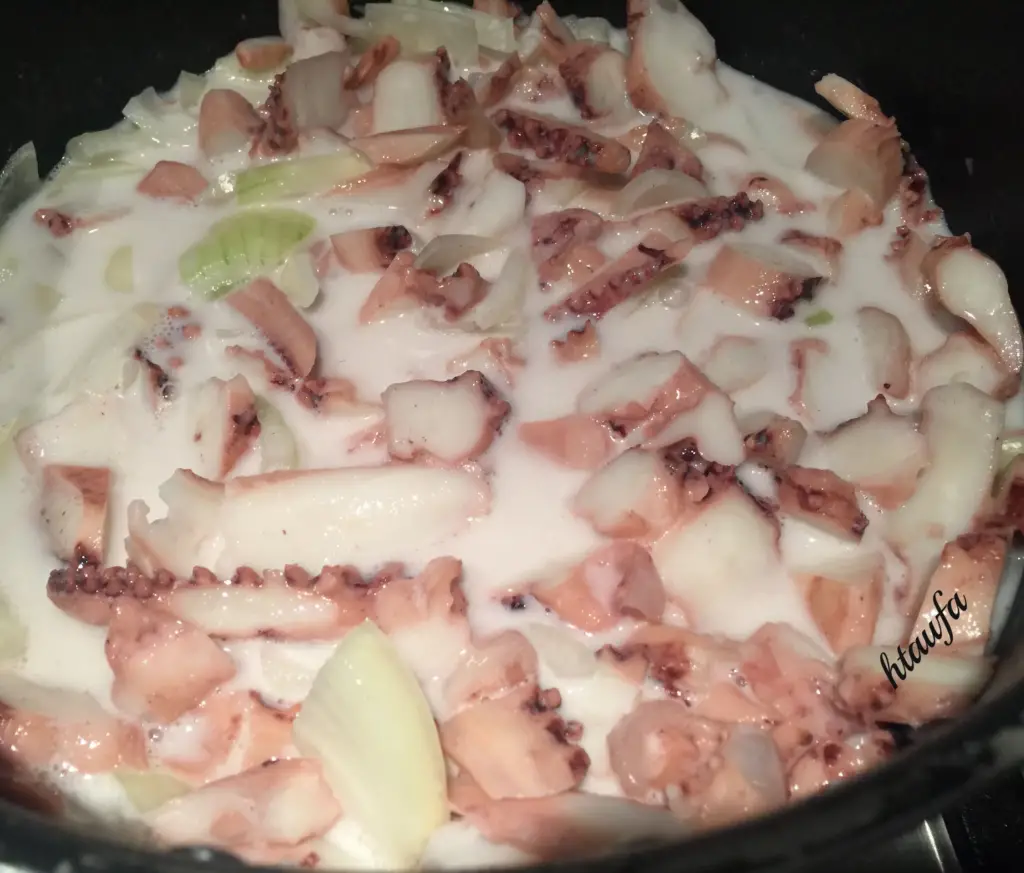
Feke is a testament to Tonga’s love affair with seafood, particularly octopus.
Tongan cuisine – Origins and Occasions
Feke, or grilled octopus, is a dish with deep oceanic roots. It’s traditionally cooked over an open flame, allowing the smoke to infuse the tender octopus with a rustic, charred flavor.
Chefs often reserve this dish for more special occasions, owing to the labor of love that is tenderizing and preparing octopus.
Tongan cuisine – Ingredients for Feke
- 1 large octopus, cleaned and tentacles separated
- Soy sauce for marinating
- Fresh ginger, grated
- Garlic cloves, minced
- Sesame oil
- Lime juice
- Brown sugar
- Chopped spring onions for garnish
Tongan cuisine – How to prepare Feke
- Preparing Feke involves a delightful marinade dance.
- You’ll start by tenderizing the octopus by massaging it or using the traditional method of beating it against a rock (yes, really!).
- Then marinate it in a concoction of soy sauce, ginger, garlic, sesame oil, lime juice, and a sprinkle of brown sugar to balance the flavors.
- Once the octopus has soaked up all the goodness, it’s grilled to perfection.
Serving and Presentation
Feke is usually served on a platter, sliced into bite-sized pieces, and garnished with spring onions.
It’s a dish that’s best enjoyed communal-style, with everyone digging in.
Drink Pairings
A light-bodied red wine, like a Pinot Noir, or a tangy tamarind juice would complement the smoky, umami flavors of Feke wonderfully.
Tongan Cuisine – Faikakai Topai

Faikakai Topai, or dumplings in sweet coconut sauce, is a humble yet delectable dessert.
Tongan Cuisine – Origins and Occasions
These dumplings are a classic Tongan dessert, often served to round off a feast.
The topai (dumplings) are said to be a fusion of traditional Polynesian and introduced European cooking methods, resulting in a dish that’s uniquely Tongan.
Tongan Cuisine – Ingredients for Faikakai Topai
- 2 cups of flour
- 1 teaspoon of baking powder
- A pinch of salt
- Water to mix
- 2 cups of coconut milk
- 1 cup of sugar
- Vanilla essence (optional)
Tongan Cuisine – How to prepare Faikakai Topai
- To make these little parcels of joy, you’ll mix flour, baking powder, and a pinch of salt, adding just enough water to form a dough.
- Once the dough is ready, it’s shaped into small balls and boiled until they float to the surface, signaling they’re done.
- The magic happens with the sauce—a simple but rich mix of coconut milk and sugar, with a dash of vanilla for that aromatic sweetness.
- The cooked dumplings are then bathed in this sweet nectar, ready to be devoured.
Serving and Presentation
Faikakai Topai is often served in a bowl with a generous amount of the sweet coconut sauce. A sprinkle of fresh coconut shreds on top can add an extra touch of island flair.
Drink Pairings
A dessert like this pairs wonderfully with a hot cup of tea or even a sweet dessert wine to enhance the experience.
Tongan Cuisine – Keke ‘Isite

Keke ‘Isite, or steamed banana cake, is a testament to the simplicity and richness of Tongan desserts.
Tongan Cuisine – Origins and Occasions
This pudding takes advantage of the abundant banana crops in Tonga. It’s a practical and delightful way to use overripe bananas, turning them into a comforting treat, commonly served at family gatherings and to honor guests.
Tongan Cuisine – Ingredients for Keke ‘Isite
- Ripe bananas, mashed
- 2 cups of flour
- 1 teaspoon of baking soda
- 1 cup of sugar
- 1/2 cup of coconut milk
- 1/2 cup of water
- A pinch of salt
Tongan Cuisine – How to prepare Keke ‘Isite
- Keke ‘Isite’s charm lies in its simplicity.
- You start by combining the dry ingredients, then adding the mashed bananas, coconut milk, and water to form a batter.
- The mix is poured into a cake tin or individual molds and then steamed until a skewer comes out clean when inserted.
- The result is a moist, dense cake that’s naturally sweet from the bananas.
Serving and Presentation
Keke ‘Isite is often served warm, straight from the steamer, sometimes with a dollop of coconut cream on top for an extra lush touch.
Drink Pairings
To balance the sweetness, a strong cup of Tongan coffee or a refreshing coconut water would be perfect accompaniments.
Tongan Food – Keke Pua’a (Pork Buns)

Keke Pua’a: A Taste of Tongan Heritage
History and Background
Keke Pua’a, or Tongan Pork Buns, is a delightful dish deeply rooted in Tongan culinary heritage. Originating from the island nation in the South Pacific, this dish reflects the intersection of Tonga’s rich history and diverse cultural influences.
Region of Origin
Situated in the heart of Polynesia, Tonga boasts a tropical climate surrounded by pristine waters. The local cuisine, including Keke Pua’a, often incorporates ingredients readily available in this lush environment.
Tongan Food – Keke Pua’a Ingredients:
- 2 cups all-purpose flour
- 1/4 cup sugar
- 1 tablespoon baking powder
- 1/2 teaspoon salt
- 1 cup coconut milk
- 1 cup cooked and shredded pork
- 1/4 cup soy sauce
- 2 tablespoons chopped green onions
- 1 teaspoon minced ginger
- Cooking oil for frying
Tongan Food – Keke Pua’a Recipe:
Prepare the Dough
- In a bowl, combine flour, sugar, baking powder, and salt.
- Gradually add coconut milk, stirring until a soft dough forms.
- Knead the dough on a floured surface until smooth.
Make the Filling
- Mix shredded pork, soy sauce, green onions, and minced ginger in a separate bowl.
- Divide the dough into small portions and flatten them into discs.
- Place a spoonful of the pork mixture in the center of each disc.
Shape and Cook the Buns
- Seal the edges of the dough to encase the pork filling, forming a bun.
- Heat oil in a pan and fry the buns until golden brown.
- Drain excess oil on paper towels.
Serving: Serve Keke Pua’a warm as a delightful snack or part of a Tongan feast.
Yield: This recipe makes approximately 12 Tongan Pork Buns.
Cooking Time: Estimated cooking time is 45 minutes.
Calories: Caloric content per serving is approximately 200 calories.
Keke Pua’a not only tantalizes the taste buds but also offers a cultural journey through Tonga’s culinary tapestry. Enjoy the blend of flavors and textures in every bite of these Tongan Pork Buns.
Tongan Food – Lu Sipi (Slow Cooked Lamb)

Lu Sipi: A Tongan Culinary Tradition
History and Background
Lu Sipi, or Slow Cooked Lamb, is a cherished dish deeply embedded in Tongan culinary heritage. Originating from the Kingdom of Tonga, this flavorful and aromatic dish is a testament to the island’s cultural richness and culinary prowess.
Region of Origin
Tonga, nestled in the heart of Polynesia, enjoys a tropical climate and abundant natural resources. Lu Sipi reflects the culinary traditions of slow cooking, allowing the flavors to meld and create a mouthwatering experience.
Tongan Food – Lu Sipi Ingredients:
- 2 kg lamb, cut into chunks
- 4 cups taro leaves, washed and shredded
- 2 cups coconut cream
- 2 cups water
- 2 large onions, sliced
- 4 cloves garlic, minced
- 1 tablespoon ginger, grated
- 2 tablespoons soy sauce
- Salt and pepper to taste
- Banana leaves for wrapping
Tongan Food – Lu Sipi Recipe:
Prepare the Lamb
- Clean and wash the lamb chunks thoroughly.
- Season with salt, pepper, minced garlic, grated ginger, and soy sauce.
- Allow the lamb to marinate for at least 30 minutes.
Assemble the Lu Sipi
- Lay out a large piece of banana leaf.
- Place a layer of taro leaves on the banana leaf.
- Add the marinated lamb on top of the taro leaves.
- Place sliced onions over the lamb.
- Pour coconut cream and water over the layers.
Wrap and Cook
- Fold the banana leaf over the ingredients, creating a neat parcel.
- Secure the parcel with kitchen twine.
- Place the wrapped Lu Sipi in a deep pot.
- Slow cook over low heat for approximately 4-6 hours until the lamb is tender.
Serving: Serve Lu Sipi hot with traditional Tongan sides such as cassava or taro.
Yield: This recipe serves about 6-8 people.
Cooking Time: Estimated cooking time is 4-6 hours.
Calories: Caloric content per serving is approximately 450 calories.
Lu Sipi is not just a dish; it’s a celebration of Tongan flavors and culinary techniques, creating a memorable experience for those fortunate enough to savor its taste.
Tongan Food – Lu Pulu

Lu Pulu: A Culinary Heritage from Tonga
History and Background
Lu Pulu, a traditional Tongan dish, stands as a testament to the cultural richness and culinary expertise of the island nation. Rooted in Tonga’s history, this dish showcases the ingenious use of local ingredients, blending flavors that have been cherished for generations.
Region of Origin
Tonga, nestled in the South Pacific, boasts a tropical climate and a vibrant food culture. Lu Pulu reflects the essence of Tongan cuisine, combining simplicity with rich, robust flavors.
Tongan Food – Lu Pulu Ingredients:
- 1 kg beef, cut into chunks
- 4 cups taro leaves, washed and shredded
- 2 cups coconut cream
- 2 cups water
- 2 large onions, sliced
- 4 cloves garlic, minced
- 1 tablespoon ginger, grated
- 2 tablespoons corned beef (optional)
- Salt and pepper to taste
- Banana leaves for wrapping
Tongan Food – Lu Pulu Recipe:
Prepare the Beef
- Clean and wash the beef chunks thoroughly.
- Season with salt, pepper, minced garlic, grated ginger, and corned beef (if using).
- Allow the beef to marinate for at least 30 minutes.
Assemble the Lu Pulu
- Lay out a large piece of banana leaf.
- Place a layer of taro leaves on the banana leaf.
- Add the marinated beef on top of the taro leaves.
- Place sliced onions over the beef.
- Pour coconut cream and water over the layers.
Wrap and Cook
- Fold the banana leaf over the ingredients, creating a secure parcel.
- Tie the parcel with kitchen twine to ensure it holds together during cooking.
- Place the wrapped Lu Pulu in a deep pot.
- Cook over low heat for approximately 3-4 hours until the beef is tender.
Serving: Serve Lu Pulu hot, traditionally accompanied by root vegetables or breadfruit.
Yield: This recipe serves about 6-8 people.
Cooking Time: Estimated cooking time is 3-4 hours.
Calories: Caloric content per serving is approximately 400 calories.
Lu Pulu encapsulates the spirit of Tongan culinary heritage, inviting you to savor the flavors that have delighted generations on the islands of Tonga.
Tongan Food – Vai Siaine (Banana and Coconut Pudding)

Vai Siaine: A Sweet Delight from the Kingdom of Tonga
History and Background
Vai Siaine, a luscious Banana and Coconut Pudding, encapsulates the sweetness of Tonga’s culinary traditions. Originating from the Kingdom of Tonga, this dessert is deeply rooted in the cultural heritage of the South Pacific nation.
Region of Origin
Tonga, with its tropical climate and fertile soil, provides an abundance of fresh produce, including bananas and coconuts. Vai Siaine is a delightful fusion of these local ingredients, reflecting the rich flavors of the island.
Tongan Food – Vai Siaine Ingredients:
- 5 ripe bananas
- 1 cup coconut cream
- 1 cup sugar
- 1 cup all-purpose flour
- 1 teaspoon baking powder
- 1/2 teaspoon vanilla extract
- A pinch of salt
- Banana leaves for wrapping
Tongan Food – Vai Siaine Recipe:
Prepare the Banana Mixture
- Mash the ripe bananas in a mixing bowl.
- Add sugar, coconut cream, and vanilla extract. Mix well.
Combine Dry Ingredients
- In a separate bowl, sift together flour, baking powder, and a pinch of salt.
- Gradually add the dry ingredients to the banana mixture, stirring continuously until a smooth batter forms.
Assemble and Wrap
- Lay out banana leaves and cut them into rectangular pieces.
- Spoon a portion of the batter onto a banana leaf.
- Fold the banana leaf over the batter, creating a secure parcel.
Steam the Puddings
- Place the wrapped Vai Siaine in a steamer.
- Steam for approximately 30-40 minutes until the pudding is firm and cooked through.
Serving: Serve Vai Siaine warm, allowing the tropical flavors to delight your taste buds.
Yield: This recipe makes about 6 servings.
Cooking Time: Estimated cooking time is 30-40 minutes.
Calories: Approximately 250 calories per serving.
Vai Siaine offers a taste of Tonga’s sweet traditions, where the combination of bananas and coconut creates a dessert that embodies the warmth and hospitality of this Polynesian paradise.
Tongan Food – Coconut quick bread

Coconut Quick Bread: Tongan Tropical Delight
History and Background
Coconut Quick Bread, a delightful Tongan treat, showcases the rich culinary heritage of the South Pacific islands. Rooted in the vibrant culture of Tonga, this bread represents a fusion of tropical flavors and traditional baking techniques.
Region of Origin
Hailing from the Kingdom of Tonga, Coconut Quick Bread mirrors the lush tropical surroundings and the abundant use of coconut in Tongan cuisine. It has become a staple in Tongan households, offering a taste of the island’s natural richness.
Tongan Food – Coconut quick bread Ingredients:
- 2 cups all-purpose flour
- 1 cup shredded coconut
- 1 cup sugar
- 1 teaspoon baking powder
- 1/2 teaspoon baking soda
- 1/2 teaspoon salt
- 1 cup coconut milk
- 1/2 cup melted coconut oil
- 2 large eggs
- 1 teaspoon vanilla extract
Tongan Food – Coconut quick bread Recipe:
Preheat and Prepare
- Preheat the oven to 350°F (175°C).
- Grease and flour a loaf pan.
Combine Dry Ingredients In a bowl, mix flour, shredded coconut, sugar, baking powder, baking soda, and salt.
Blend Wet Ingredients
- In another bowl, whisk together coconut milk, melted coconut oil, eggs, and vanilla extract.
- Combine the wet and dry mixtures, stirring until just combined.
Bake
- Pour the batter into the prepared loaf pan.
- Bake for approximately 50-60 minutes or until a toothpick inserted in the center comes out clean.
Cool and Serve
- Allow the Coconut Quick Bread to cool in the pan for 10 minutes.
- Transfer to a wire rack to cool completely before slicing.
Yield: This recipe makes one loaf, serving about 8-10 people.
Cooking Time: Approximately 50-60 minutes.
Calories: Caloric content may vary; an average slice contains around 200 calories.
Coconut Quick Bread offers a taste of Tonga’s tropical paradise, blending the sweetness of coconut with the comforting warmth of freshly baked bread. Enjoy it as a snack or dessert, savoring the flavors of the South Pacific.
Tongan Food – Pai Faina

Tongan Food – Pai Faina (Pineapple Pie): A Tropical Culinary Delight
History and Background
Tongan Pineapple Pie is a delectable dessert that captures the tropical essence of the Kingdom of Tonga. Rooted in the nation’s rich culinary traditions, this pie showcases the use of fresh, locally sourced ingredients, highlighting the island’s abundance of pineapples.
Region of Origin
Originating from the lush landscapes of Tonga, this pie is a celebration of the tropical flavors that flourish in the region. Tongan Pineapple Pie reflects the island’s love for incorporating indigenous fruits into their cuisine.
Pai Faina Ingredients:
- 2 cups fresh pineapple, diced
- 1 cup sugar
- 1 tablespoon cornstarch
- 1 tablespoon lemon juice
- 2 sheets pre-made pie crust
- 1 egg (for egg wash)
Pai Faina Recipe:
Preparing the Pineapple Filling
- In a saucepan, combine diced pineapple, sugar, and lemon juice.
- Cook over medium heat until the pineapple releases its juices and the sugar dissolves.
- In a small bowl, mix cornstarch with a little water to create a slurry.
- Add the cornstarch mixture to the pineapple mixture, stirring constantly until the filling thickens.
- Remove from heat and let the pineapple filling cool.
Assembling the Pie
- Preheat the oven to 375°F (190°C).
- Roll out one sheet of pie crust and place it in a pie dish.
- Pour the cooled pineapple filling into the pie crust, spreading it evenly.
- Cover the filling with the second sheet of pie crust. Seal the edges and crimp with a fork.
Baking
- Beat the egg and brush it over the top crust for a golden finish.
- Make a few small slits in the top crust to allow steam to escape.
- Bake in the preheated oven for 30-35 minutes or until the crust is golden brown.
Yield: This recipe serves approximately 8 people.
Cooking Time: Approximately 30-35 minutes.
Calories: Caloric content may vary; an average serving contains around 250 calories.
Tongan Pineapple Pie offers a taste of Tonga’s tropical paradise, making it a delightful dessert for any occasion. Share the flavors of the Pacific with this simple yet flavorful pie.
Tongan Food – Keke Vai with Banana (Banana Pancakes)

Keke Vai with Banana (Banana Pancakes): A Tongan Breakfast Tradition
History and Background
Keke Vai with Banana, or Banana Pancakes, is a beloved breakfast dish in Tonga that reflects the nation’s cultural and culinary heritage. Tongans have a deep connection with bananas, which are abundant in the region, making this recipe a staple in many households.
Region of Origin
Originating from the tropical paradise of Tonga, Keke Vai with Banana is a flavorful and satisfying breakfast option that incorporates local ingredients, showcasing the island’s agricultural richness.
Tongan Food – Keke Vai with Banana Ingredients:
- 2 ripe bananas, mashed
- 2 cups all-purpose flour
- 2 tablespoons sugar
- 1 teaspoon baking powder
- 1/2 teaspoon baking soda
- 1/4 teaspoon salt
- 2 large eggs
- 1 1/2 cups buttermilk
- 1/4 cup unsalted butter, melted
- Cooking oil (for greasing the pan)
Tongan Food – Keke Vai with Banana Recipe:
Prepare the Batter
- In a large bowl, combine the mashed bananas, flour, sugar, baking powder, baking soda, and salt.
- In a separate bowl, whisk together the eggs, buttermilk, and melted butter.
- Pour the wet ingredients into the dry ingredients and gently mix until just combined. Do not overmix; lumps are acceptable.
Cook the Pancakes
- Heat a griddle or non-stick pan over medium heat and lightly grease with cooking oil.
- Pour 1/4 cup of batter onto the griddle for each pancake.
- Cook until bubbles form on the surface, then flip and cook the other side until golden brown.
Serve
- Stack the banana pancakes on a plate.
- Serve warm with your favorite toppings such as sliced bananas, maple syrup, or honey.
Yield: This recipe makes approximately 12 pancakes.
Cooking Time: Each pancake takes about 2-3 minutes per side.
Calories: Caloric content may vary; an average serving of two pancakes contains around 200 calories.
Keke Vai with Banana is not only a delicious breakfast option but also a delightful way to experience the tropical flavors of Tonga to start your day.
Tongan Food – Palusami

Palusami: A Taste of Tradition in Tongan Cuisine
History and Background
Palusami holds a special place in Tongan culinary culture, representing a traditional dish passed down through generations. This coconut cream-infused delicacy reflects the rich heritage and connection Tongans have with the land and its resources.
Region of Origin
Originating from the islands of Tonga in the South Pacific, Palusami showcases the region’s reliance on coconut, taro leaves, and local flavors, making it a beloved dish in Tongan households.
Tongan Food – Palusami Ingredients:
- 2 cups taro leaves, washed and chopped
- 1 cup coconut cream
- 1 cup canned or freshly grated coconut
- 1 onion, finely chopped
- 2 tomatoes, diced
- Salt to taste
- Banana leaves (for wrapping)
Tongan Food – Palusami Recipe:
Prepare the Filling
- In a bowl, combine chopped taro leaves, grated coconut, chopped onion, diced tomatoes, and salt.
- Mix the ingredients thoroughly, ensuring an even distribution of flavors.
Assemble and Wrap
- Cut banana leaves into rectangular pieces, ensuring they are large enough to hold a generous portion of the filling.
- Place a portion of the filling in the center of a banana leaf.
- Fold the sides of the leaf over the filling, creating a rectangular packet.
- Secure the packet with toothpicks or kitchen twine.
Steam
- Set up a steamer and bring the water to a boil.
- Place the wrapped Palusami in the steamer basket.
- Steam for approximately 45-60 minutes until the taro leaves are tender.
Serve
- Carefully unwrap the banana leaves.
- Serve Palusami warm as a side dish or with traditional Tongan staples like cassava or yams.
Yield: This recipe serves 4-6 people.
Cooking Time: Approximately 45-60 minutes.
Calories: Caloric content may vary; a serving of Palusami is approximately 200 calories.
Palusami is more than a dish; it’s a cultural experience that allows you to savor the authentic flavors of Tonga.
Tongan Food – Pai Siamu (Jam Pie)

Pai Siamu: Tonga’s Sweet Jam Pie Delight
History and Background
Pai Siamu, or Jam Pie, is a beloved Tongan dessert that reflects the rich cultural tapestry of the region. Tongan cuisine, deeply rooted in Polynesian traditions, incorporates fresh, tropical ingredients.
The recipe for Pai Siamu has been passed down through generations, creating a delightful legacy on Tonga’s dining tables.
Tongan Food – Pai Siamu Ingredients
- 2 cups all-purpose flour
- 1 cup butter, chilled and diced
- 1/2 cup powdered sugar
- 1 cup fruit jam (pineapple or guava work well)
- 2 tablespoons cornstarch
- 1 tablespoon lemon juice
- Powdered sugar for dusting
Tongan Food – Pai Siamu Recipe
Pastry Crust:
- In a large bowl, combine the flour and powdered sugar.
- Add the chilled, diced butter and mix until the mixture resembles breadcrumbs.
- Form the dough into a ball, cover with plastic wrap, and refrigerate for 30 minutes.
Jam Filling:
- In a saucepan, mix the fruit jam, cornstarch, and lemon juice.
- Cook over medium heat until the mixture thickens, stirring constantly.
- Remove from heat and let it cool.
Pie Assembly:
- Preheat the oven to 350°F (175°C).
- Roll out the chilled pastry dough and line a pie dish.
- Pour the cooled jam filling into the pastry-lined dish.
- Create a lattice pattern with strips of the remaining pastry for the top crust.
- Bake for 30-35 minutes or until the crust is golden brown.
- Let it cool before dusting with powdered sugar.
Serving Information
- Serves: 8
- Cooking Time: 1 hour (including cooling time)
- Calories: Approximately 320 calories per serving
Enjoy this Tongan culinary treasure with its perfect blend of buttery crust and luscious jam filling, encapsulating the essence of Tonga’s sweet traditions.
Tongan Food – Traditional Sapa Sui

Traditional Sapa Sui: Tonga’s Hearty Taro Stew
History and Background
Sapa Sui, a traditional Tongan dish, reflects the essence of Tonga’s rich culinary heritage.
This hearty taro stew has deep roots in Polynesian traditions and is often enjoyed during festive occasions and family gatherings, symbolizing unity and abundance.
Tongan Food – Traditional Sapa Sui Ingredients
- 2 lbs taro, peeled and cubed
- 1 lb lamb or beef, diced
- 1 cup coconut cream
- 2 cups spinach, chopped
- 1 onion, finely chopped
- 2 tomatoes, diced
- 2 cloves garlic, minced
- 1 tablespoon ginger, grated
- 2 tablespoons cooking oil
- Salt and pepper to taste
Tongan Food – Traditional Sapa Sui Recipe
Preparing Taro:
- Peel and cube the taro, ensuring uniform pieces.
- Rinse the taro cubes in cold water.
Cooking Stew:
- In a large pot, heat oil over medium heat and sauté onions, garlic, and ginger until fragrant.
- Add diced meat and brown on all sides.
- Stir in coconut cream, allowing it to simmer for 5 minutes.
- Add taro cubes, tomatoes, and enough water to cover the ingredients.
- Season with salt and pepper, then cover and simmer until taro is tender (approximately 30-40 minutes).
- Stir in chopped spinach and cook until wilted.
Serving Information
- Serves: 4-6
- Cooking Time: 1 hour
- Calories: Approximately 450 calories per serving
Sapa Sui is a flavorful combination of taro’s earthy taste, tender meat, and the richness of coconut cream, providing a true taste of Tonga’s cultural and culinary heritage. Enjoy this hearty stew with family and friends.
Tongan Food – Huli Huli Chicken

Huli Huli Chicken: A Taste of Tongan Barbecue Heritage
History and Background
Huli Huli Chicken, a Tongan barbecue classic, reflects the rich culinary heritage of the Pacific Islands. The term “Huli Huli” originates from the Hawaiian language, meaning “turn” or “rotate,” highlighting the cooking technique involved.
This dish represents a fusion of Tongan and Hawaiian flavors, showcasing the influence of various cultures on Tonga’s gastronomic landscape.
Tongan Food – Huli Huli Chicken Ingredients
- 4 lbs chicken thighs, bone-in and skin-on
- 1 cup pineapple juice
- 1/2 cup soy sauce
- 1/4 cup ketchup
- 1/4 cup brown sugar
- 2 tablespoons ginger, minced
- 2 cloves garlic, minced
- 1 tablespoon sesame oil
- Salt and pepper to taste
- Pineapple slices for garnish
Tongan Food – Huli Huli Chicken Recipe
Marinating Chicken:
- In a bowl, combine pineapple juice, soy sauce, ketchup, brown sugar, minced ginger, minced garlic, and sesame oil.
- Season the chicken thighs with salt and pepper, then place them in a large resealable plastic bag.
- Pour the marinade over the chicken, ensuring all pieces are well-coated. Marinate in the refrigerator for at least 4 hours, or preferably overnight.
Grilling Chicken:
- Preheat the grill to medium-high heat.
- Remove the chicken from the marinade, reserving the marinade for basting.
- Grill the chicken, turning and basting with the reserved marinade, until fully cooked and charred, about 20-25 minutes.
Serving Information
- Serves: 6-8
- Cooking Time: 4-24 hours (marination) + 25 minutes (grilling)
- Calories: Approximately 400 calories per serving
Huli Huli Chicken captures the essence of Tongan barbecue, offering a perfect balance of sweet and savory flavors with a hint of tropical influence. Serve this dish at your next gathering, accompanied by grilled pineapple slices for an authentic Tongan experience.
Tongan Food – Ahi Poke

Ahi Poke: Tonga’s Fresh Seafood Delight
History and Background
Ahi Poke, a beloved Tongan dish, showcases the island nation’s affinity for fresh seafood. Originating from Polynesian culinary traditions, this dish reflects Tonga’s coastal lifestyle and the abundance of the Pacific Ocean.
“Ahi” in Hawaiian means tuna, emphasizing the key ingredient in this flavorful and refreshing poke.
Tongan Food – Ahi Poke Ingredients
- 1 lb fresh tuna, sushi-grade, cubed
- 1/4 cup soy sauce
- 1 tablespoon sesame oil
- 1 tablespoon rice vinegar
- 1 teaspoon ginger, grated
- 2 green onions, thinly sliced
- 1/2 teaspoon red pepper flakes (optional)
- 1 teaspoon sesame seeds, for garnish
- 1 avocado, diced (optional)
- Cooked rice or salad greens, for serving
Tongan Food – Ahi Poke Recipe
Preparing Ahi Poke:
- In a bowl, combine soy sauce, sesame oil, rice vinegar, grated ginger, sliced green onions, and red pepper flakes (if using).
- Gently fold in the cubed tuna, ensuring it is evenly coated with the marinade. Let it marinate in the refrigerator for at least 15-20 minutes.
Serving Ahi Poke:
- Arrange a bed of cooked rice or salad greens on individual plates.
- Spoon the marinated tuna over the rice or greens.
- Garnish with diced avocado and sprinkle sesame seeds on top.
Serving Information
- Serves: 2-4
- Cooking Time: 20 minutes (including marination)
- Calories: Approximately 300 calories per serving
Ahi Poke captures the essence of Tonga’s coastal flavors, offering a delightful combination of fresh tuna, savory soy sauce, and the subtle warmth of ginger. Whether served as an appetizer or a light main course, Ahi Poke brings a taste of the ocean to your Tongan culinary experience.
Tongan Food – Moa Fa’Asaina (Samoan Chicken with Coconut Rice)

Moa Fa’Asaina: A Taste of Polynesia in Tonga
History and Background
Moa Fa’Asaina, a delightful Tongan dish, is influenced by the rich culinary tapestry of Polynesia. This savory chicken recipe represents Tonga’s cultural diversity and connection to neighboring Pacific islands.
The dish beautifully combines the bold flavors of Samoa with Tonga’s unique twist, creating a culinary masterpiece that celebrates the region’s heritage.
Tongan Food – Moa Fa’Asaina Ingredients
- 2 lbs chicken pieces (thighs, drumsticks)
- 1 cup coconut milk
- 1 large onion, finely chopped
- 3 cloves garlic, minced
- 1 tablespoon ginger, grated
- 2 tablespoons soy sauce
- 1 tablespoon oyster sauce
- 2 tablespoons vegetable oil
- Salt and pepper to taste
- Chopped green onions and cilantro for garnish
Tongan Food – Moa Fa’Asaina Recipe
Preparing Moa Fa’Asaina:
- Season chicken pieces with salt and pepper.
- In a large pan, heat vegetable oil over medium heat. Add chopped onion, minced garlic, and grated ginger. Sauté until fragrant.
- Add chicken pieces to the pan and brown on all sides.
- Pour in coconut milk, soy sauce, and oyster sauce. Stir well, ensuring the chicken is coated in the flavorful mixture.
- Cover and simmer over low heat for 30-40 minutes or until the chicken is cooked through and tender.
Preparing Coconut Rice:
- While the chicken is simmering, prepare coconut rice according to package instructions.
- Serve the Moa Fa’Asaina over a bed of coconut rice.
Serving Information
- Serves: 4-6
- Cooking Time: 45-50 minutes
- Calories: Approximately 400 calories per serving
Moa Fa’Asaina brings the taste of Samoa to Tonga, creating a fusion of flavors that reflects the region’s diverse culinary influences. This dish, served over fragrant coconut rice, is a true celebration of Polynesian cuisine, perfect for sharing with family and friends.
Tongan Food – Alaisa Fa’apopo (Coconut Rice)

Alaisa Fa’apopo: A Taste of Samoa in Tonga
History and Background
Alaisa Fa’apopo, a mouthwatering Samoan Coconut Rice, has found its way into the heart of Tongan cuisine, showcasing the interconnectedness of Polynesian flavors. Rooted in the culinary traditions of Samoa, this dish reflects the cultural exchange and shared culinary heritage among Pacific islands.
Tongan Food – Alaisa Fa’apopo Ingredients
- 2 cups jasmine rice
- 2 cups coconut milk
- 1 cup water
- 1/2 teaspoon salt
- 1 tablespoon sugar
- 1 cinnamon stick (optional)
- 1/2 cup shredded coconut (optional)
Tongan Food – Alaisa Fa’apopo Recipe
Cooking Alaisa Fa’apopo:
- Rinse the jasmine rice under cold water until the water runs clear.
- In a saucepan, combine rice, coconut milk, water, salt, sugar, and the optional cinnamon stick.
- Bring the mixture to a gentle boil over medium heat, then reduce to low heat, cover, and simmer for 15-20 minutes.
- If using shredded coconut, add it to the rice halfway through the cooking process.
- Once the rice is tender and has absorbed the liquid, remove it from heat.
- Allow the rice to sit, covered, for an additional 5-10 minutes to steam.
Serving Information
- Serves: 4-6
- Cooking Time: 20-25 minutes
- Calories: Approximately 300 calories per serving
Alaisa Fa’apopo brings the tropical essence of Samoa to Tonga through its rich coconut flavor and aromatic jasmine rice. This delightful side dish is a testament to the culinary synergy that defines Polynesian cuisine, creating a harmonious blend of taste and tradition. Serve it alongside your favorite Tongan or Samoan dishes for a complete Pacific feast.
Conclusion
In sum, Tongan cuisine offers a rich tapestry of flavors, textures, and culinary techniques that are deeply intertwined with the islands’ culture and way of life. From the earthy sweetness of root crops like taro and cassava to the succulent tenderness of fresh seafood and the communal joy of a traditional umu feast,
Tongan food invites us to explore a world where every meal is a celebration of community and natural bounty. Whether you’re drawn to the simplicity of a ripe papaya or the complex flavors of lu pulu, there’s no doubt that Tongan cuisine has the power to captivate and satisfy.
As we conclude this exploration, we are reminded that food is more than sustenance; it is a narrative of people, place, and tradition — and Tongan dishes tell a story worth savoring.
FAQ’s
What is a traditional Tongan feast called?
A traditional Tongan feast is known as an ‘umu’, which is similar to the Hawaiian luau. It involves cooking food using heated rocks buried in a pit oven in the ground. This method imparts a unique, smoky flavor to the dishes, often featuring meats, fish, and a variety of root vegetables.
Can you describe a popular Tongan dish?
One popular Tongan dish is ‘lu pulu’, which is corned beef wrapped in taro leaves and cooked with coconut milk. It combines the rich flavors of the beef with the creamy, nutty taste of coconut and the earthy notes of the taro leaves, creating a hearty and comforting meal.
What are common ingredients in Tongan cuisine?
Common ingredients in Tongan cuisine include root vegetables like taro and cassava, tropical fruits like coconut, banana, and papaya, as well as a variety of leafy greens. Seafood is also a staple, given Tonga’s island geography, with fish, octopus, and shellfish frequently featured.
Is Tongan food spicy?
Tongan food is generally not spicy. It focuses more on the fresh flavors of its ingredients rather than the use of heavy spices. However, like many Pacific cuisines, it may include mild seasonings and aromatic herbs to enhance the natural flavors of the food.
How important is seafood in Tongan cuisine?
Seafood is extremely important in Tongan cuisine, given the country’s location in the Pacific Ocean. Fish and other seafood are a primary protein source, often eaten fresh, but also preserved for future use through techniques such as smoking or drying.
Are there any unique beverages in Tonga?
‘Otai is a unique and refreshing Tongan beverage made from a blend of watermelon or mango, coconut milk, and sometimes pineapple, mixed with shredded coconut and served cold. It’s a popular drink to enjoy on hot days and is often served during feasts and gatherings.

